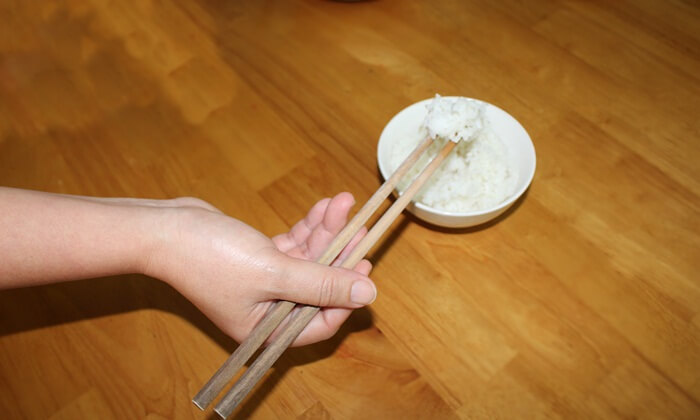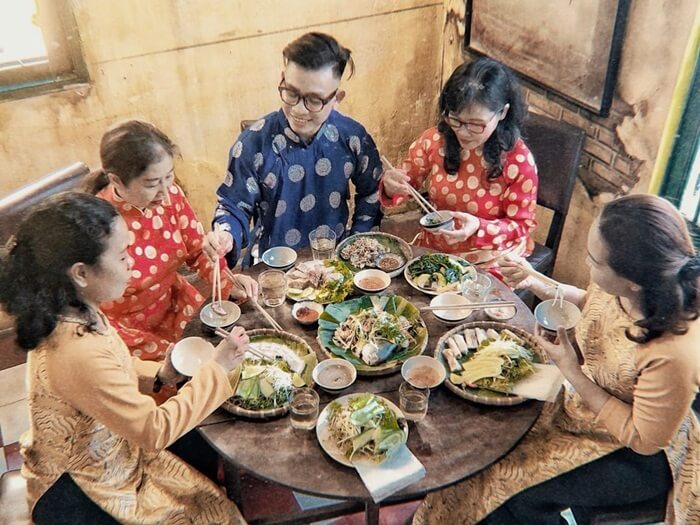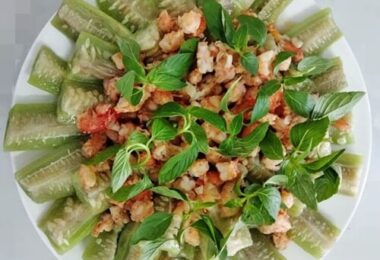In Vietnam, a family meal is more than just food on the table — it is a stage where culture, respect, and subtle traditions quietly play their parts. Many of these dining customs are never spoken aloud, yet everyone seems to know them.
They are not simply rules, but gestures of politeness that reveal the elegance of one’s upbringing. Some believe these ways belong only to the past, practiced in well-to-do households, while the less fortunate simply focus on eating enough to be full.
In modern life in Vietnam, with its whirlwind pace and quick, distracted meals, following all of these rules can feel exhausting. Yet many agree: while it’s not necessary to observe every detail, certain courtesies should never be forgotten.
We’ve gathered these 49 traditional Vietnamese dining rules so that, as you share a meal with a local family, you can appreciate the beauty of these customs — and perhaps, for a moment, feel the warmth of Vietnam’s timeless hospitality.
A. Chopstick Etiquette in Vietnam

In Vietnam, sharing a meal is more than eating—it’s a gesture of warmth, respect, and harmony. To fully embrace this beautiful dining culture, here are some gentle reminders to follow when using chopsticks:
- When lifting your rice bowl, avoid bringing rice to your mouth more than three times in a row—it’s a subtle sign of mindfulness and moderation.
- Rather than taking food directly from a shared plate to your mouth, place it in your own bowl first. This keeps the meal graceful and considerate for everyone.
- Shared soups are to be enjoyed without stirring them with your own chopsticks or spoon—let the flavors stay undisturbed.
- When selecting food, take what’s in front of you without rotating the plate in search of a “better” piece.
- Never place chopsticks upright in a bowl of rice—this resembles incense offered during ancestor worship.
- Avoid dipping the full tips of your chopsticks into fish sauce or dipping bowls; just touch enough to flavor your bite.
- When offering food to someone else, turn your chopsticks around and use the clean end.
- Refrain from biting, chewing, or licking your chopsticks, and avoid clinking them against bowls or spoons.
- Always hold your chopsticks and bowl with both hands when eating. If you need to serve soup or do something else, set your chopsticks neatly on a plate or chopstick rest.
By following these simple customs, you won’t just be using chopsticks—you’ll be partaking in a centuries-old tradition that turns every meal into an act of respect and connection.
B. Graceful Table Manners in Vietnam

In Vietnam, mealtimes are moments of connection—where respect, harmony, and care for others are served alongside the dishes. While the rules may feel subtle, they help turn an ordinary meal into an art of living.
- Whether seated on a mat or at a table, avoid shaking your legs. In traditional belief, it reflects impatience or impropriety, and at the dining table, it is seen as deeply disrespectful.
- Sit at a comfortable distance—neither too close to crowd the tray nor too far to reach with ease.
- Keep your back upright when on a chair. If seated on a mat, lean forward with your back and arms to reach food—never lift your hips.
- Your hands should rest gently above the table, holding bowl and chopsticks. Avoid tucking them beneath the table or pressing them heavily on top.
- Resting your chin on the table is discouraged—it shows a lack of engagement with the meal.
- Take moderate mouthfuls of rice; avoid overfilling your mouth.
- Do not blow directly on hot food. Instead, scoop from the cooler edges of the dish.
- When you finish using a soup spoon, leave it face down in the bowl.
- Dip only the food into sauces, not the tips of your chopsticks—and never re-dip food that has already been bitten.
- Chew with your mouth closed, keeping conversation paused until you’ve swallowed.
- Avoid making noise while eating, such as slurping or loud chewing.
- Do not speak, drink soup, or sip beer while chewing rice.
- Refrain from tapping chopsticks, bowls, or spoons—it can be disruptive and impolite.
- For soups or porridge served in small bowls, you may lift the bowl to sip. For larger or deeper bowls, use a spoon instead.
- Begin eating only after the elders have started, or after the host invites you if you are a guest.
- Never criticize the taste of a dish. Cooking is an act of care, and even if it isn’t to your liking, it may delight someone else. A kind word keeps the table warm.
In the heart of Vietnamese dining, every gesture is a quiet expression of gratitude—for the food, the cook, and the company gathered around the table.
C. Mindful Dining: The Unspoken Courtesies of a Vietnamese Meal
Beyond flavors and aromas, Vietnamese dining is a dance of quiet gestures—small acts that preserve harmony at the table.
- Even if one dish steals your heart, avoid reaching for it continuously; share the joy so everyone can savor it.
- Taste your food before adding chili, pepper, lemon, or salt—let the chef’s intended flavor greet you first.
- Finish every grain of rice in your bowl; it’s a silent thank-you to those who worked to bring it to your plate.
- When serving, include a small side bowl for bones, shrimp heads, or inedible parts—keeping the main plate tidy.
- Very young children should have their own tray and a gentle hand to guide them, so as not to disturb elders. From about age six, they may join the family table once they’ve learned basic manners.
- If a child wants a dish beyond their reach, they should politely ask an adult to serve it.
- Keep personal belongings away from the table—except perhaps a folded paper fan along the edge. In today’s age, placing a mobile phone on the dining table is both impolite and unhygienic.
- For latecomers, prepare a fresh plate rather than leaving them half-eaten portions.
- Eat slowly and with ease; don’t rush or chew while walking.
- Avoid letting food spill from your mouth or scatter on the table; rise from your seat leaving the tablecloth as pristine as when you sat down.
- If you find a bone or something unexpected in your bite, remove it discreetly—never spit it out onto the table.
- Burping during a meal is considered impolite, except for the elderly over seventy or very young children.
- If food makes you sneeze or your nose run, excuse yourself before tending to it.
- When cooking for guests, keep flavors balanced—not overly spicy or salty—so everyone can enjoy without discomfort.
- Maintain a comfortable distance from others to avoid accidental contact, especially when using chopsticks.
In Vietnam, these courtesies are not strict rules, but gentle traditions—reminders that meals are as much about kindness and respect as they are about taste.
Grace at the Vietnamese Table: The Final Touches of Dining Etiquette
In Vietnam, mealtimes are a tapestry of flavors, gestures, and quiet respect. These final courtesies complete the picture of a gracious guest or host.
- Mind your sleeves when reaching for food, so they don’t brush against the dishes.
- If a piece of food is large, cut it into smaller portions to make serving and eating more graceful.
- Should you need to leave the table mid-meal, politely ask for permission first.
- Always thank your host after a meal, even if it’s simply between spouses. A warm word of praise for the food is never wasted. Learning some famous Vietnamese food names can help you connect more deeply with the local culture.
- Before eating, offer an invitation or greeting, as custom dictates. In some homes, the eldest signals everyone to begin; in others, the younger invite their elders to enjoy the meal first. Observe or ask the host to follow their tradition.
- If you wish to reapply lipstick after the meal, excuse yourself to the bathroom—never do it at the table.
- Wait for the host to guide you to your seat; don’t choose one yourself before being invited.
- Enjoy beer in Vietnam or wine in moderation when dining with family.
- Refrain from discussing your diet or allergies unless your host asks—allow the conversation to remain warm and welcoming.
In the Vietnamese way, every meal is more than nourishment—it’s a gentle dance of attentiveness, respect, and shared joy.




